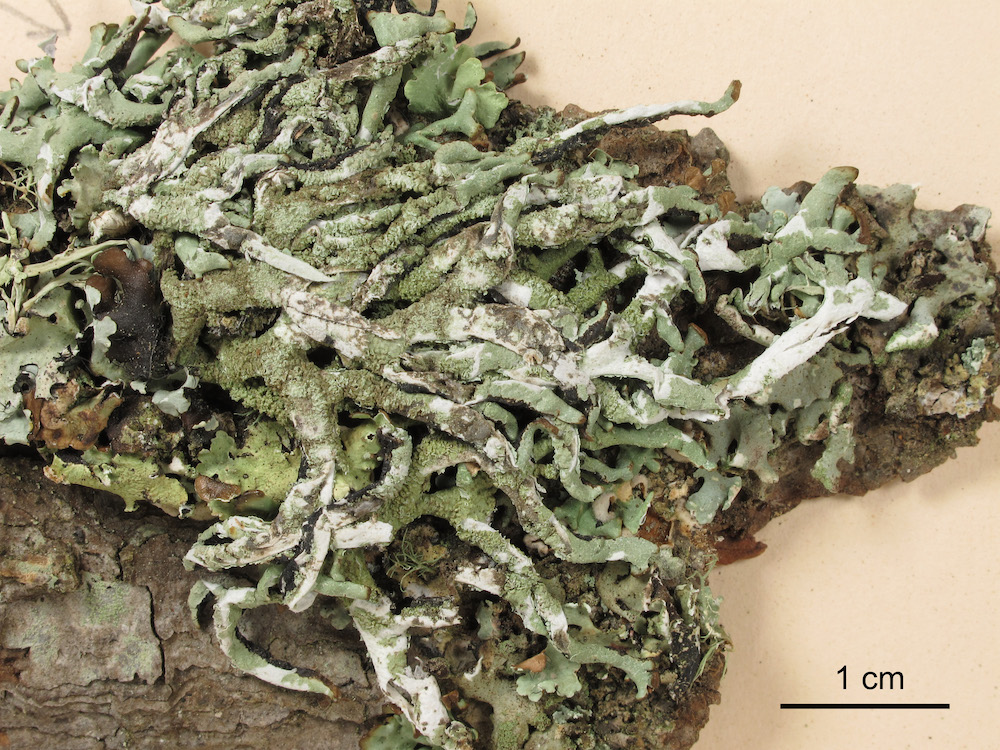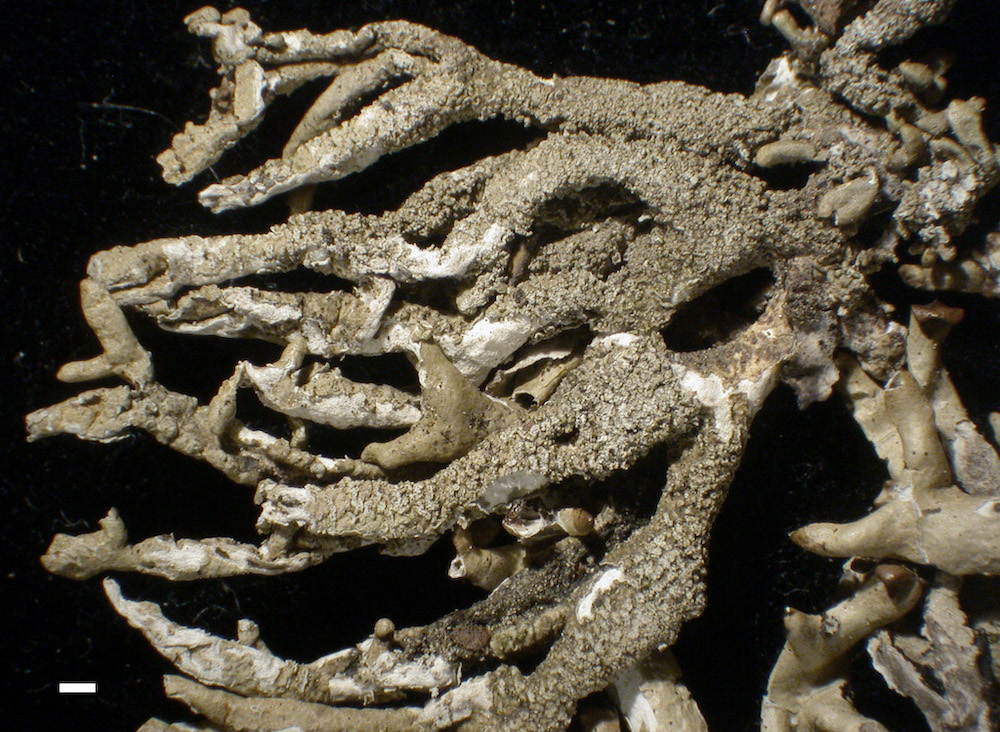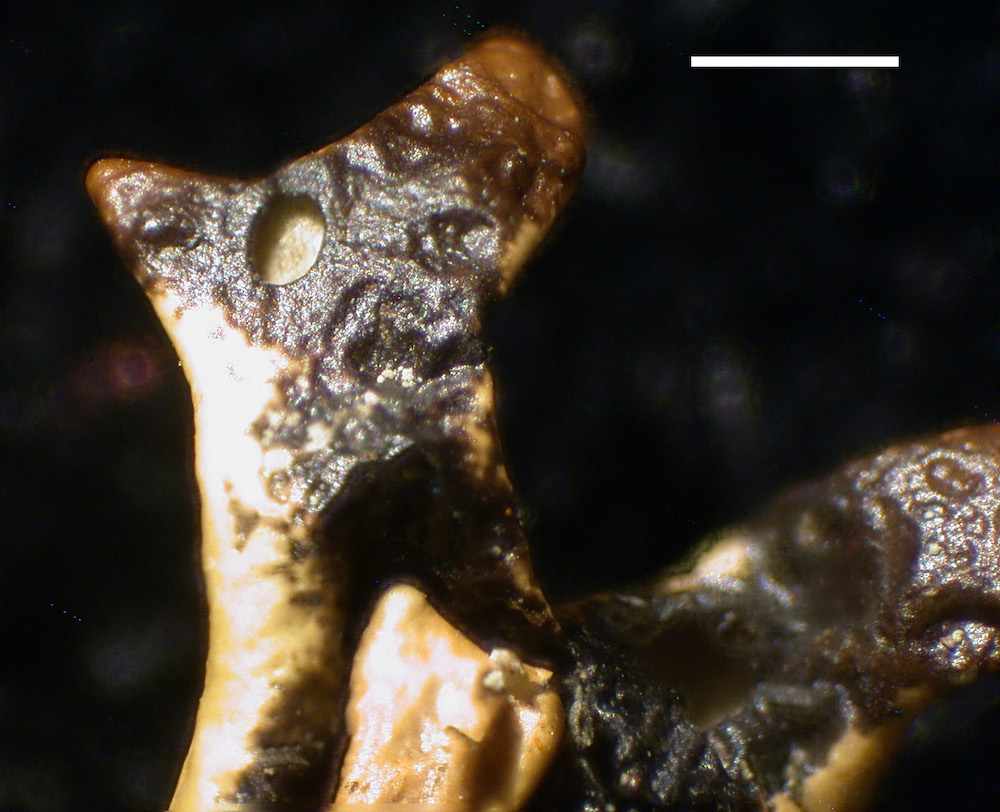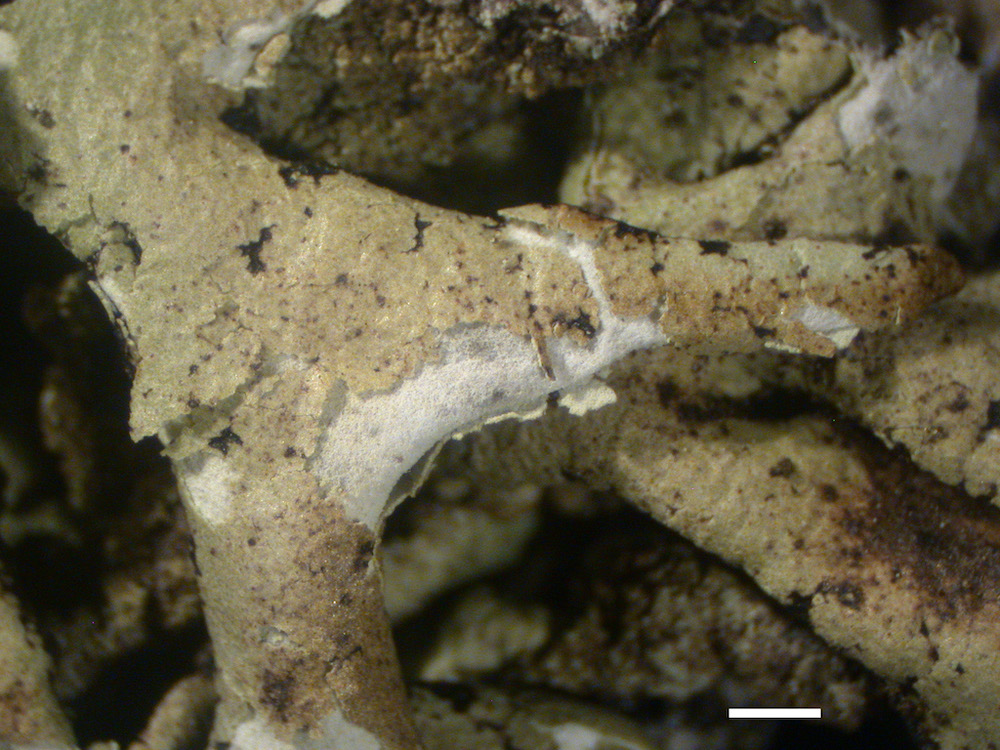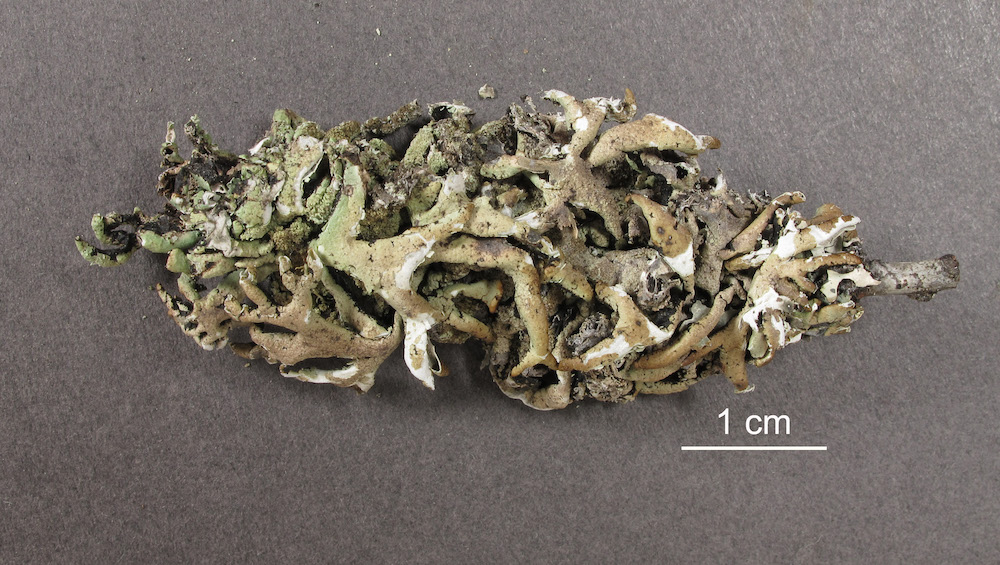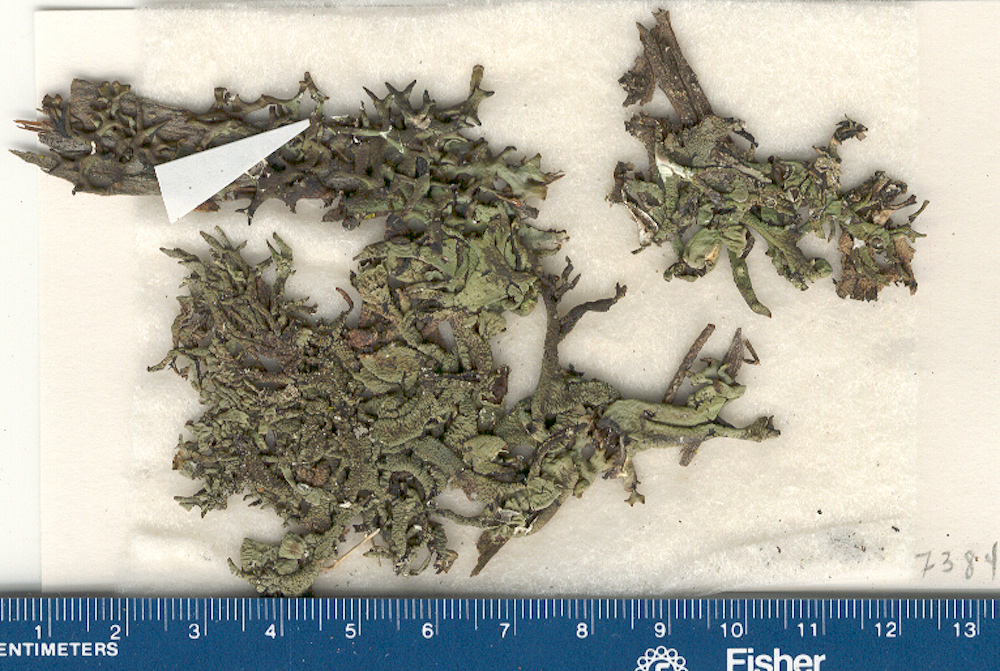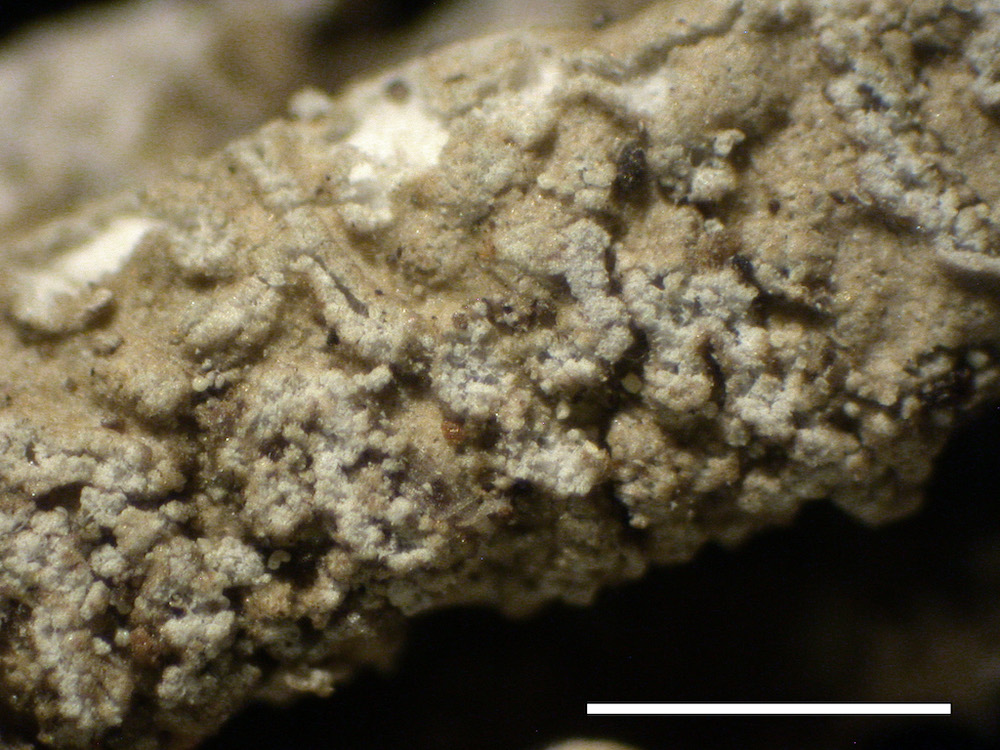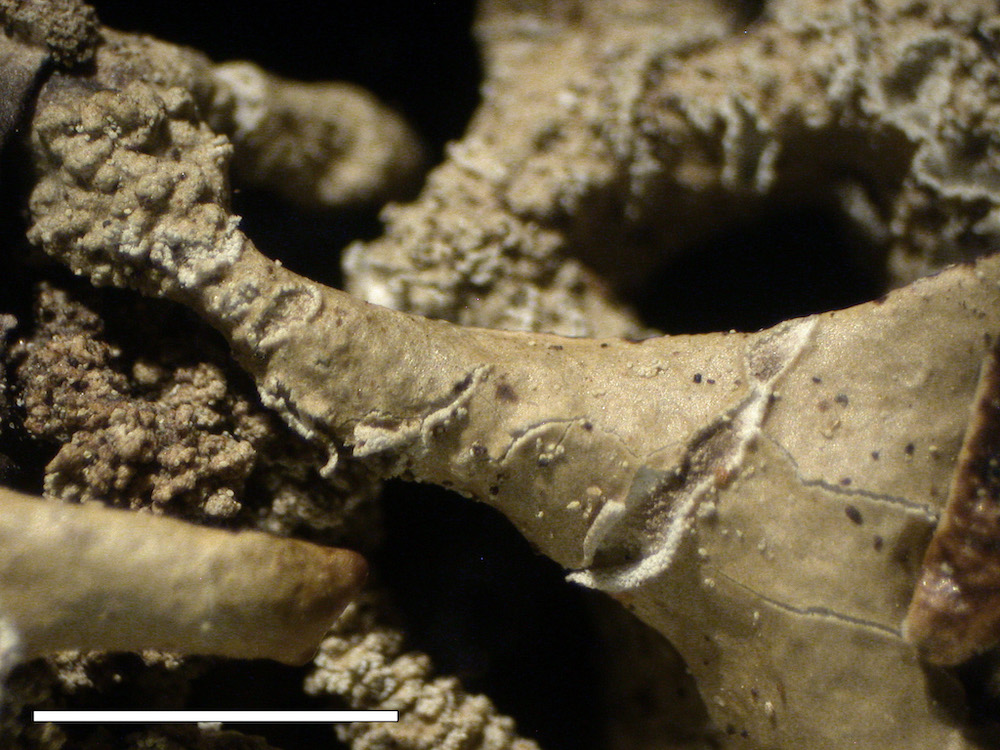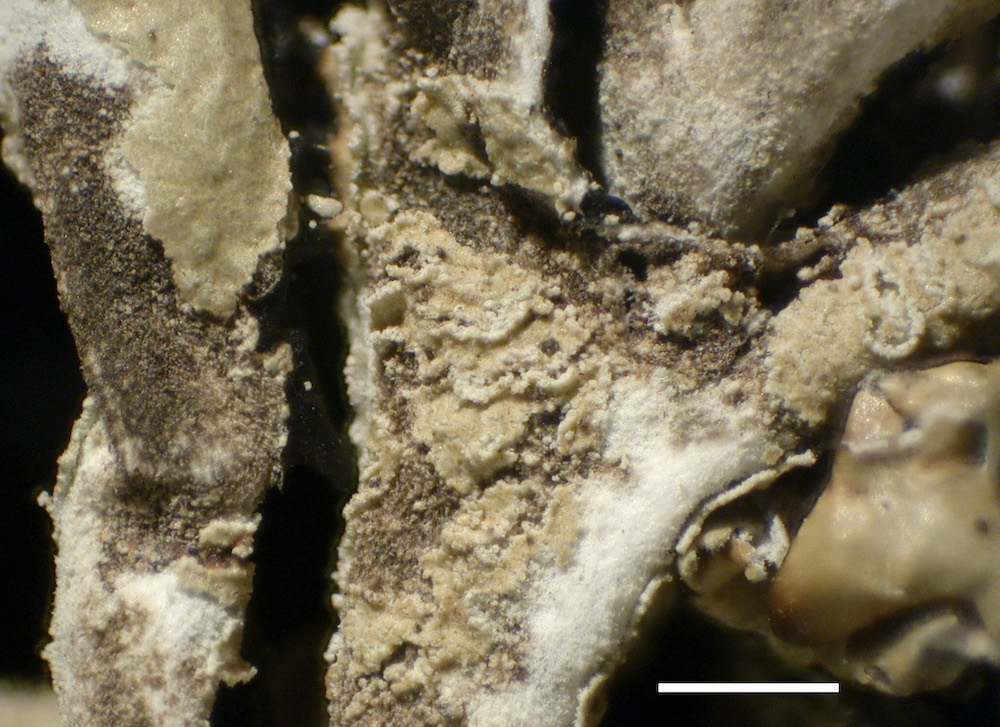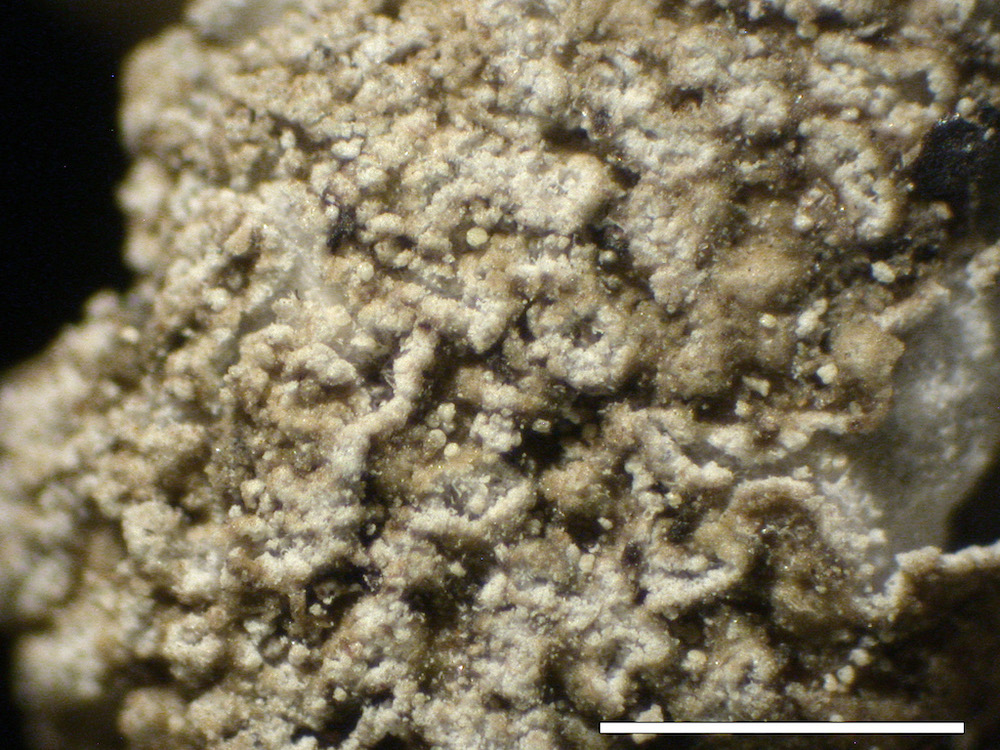Click on Characteristic name for explanation. Click on image for larger version.
Overview
| Synopsis:
| Schizidiate on appressed to suberect lobes with isotomic dichotomous branching, budding and adventitious branching rare, perforations occasional on lobe tips and lower surface; medulla P-, K-, K+ orange red.
|
| Distribution:
| Endemic to offshore islands of Baja California (Cedros, Guadalupe) and California (Santa Rosa), rarely n to central coastal Calif. Mexico: Cedros Island (Nash 34257, Marsh 7409, Beauchamp s.n. COLO 62444). United States: California: Santa Rosa Island, Ryan 31429 (ASU).
|
| Habitat:
| Quercus or Pinus groves or forests
|
| Range:
| Central and Southern California
|
| Other Diagnostics: | Cortex flaking off from both smooth parts and rugose parts; ascospores: ellipsoid, (5.5-)6.5-7 (-8) x (3.5-) 4-5 _m;. Production of asexual propagules is rather variable, but in most specimens the cortex tends flake off from both smooth parts and rugose parts, taking with it the algal layer. The type is not as heavily schizidiate as some specimens, but it is fertile and shows the variation from smooth to rugose lobes. True soredia can be nonexistent to well developed. The species is also unusual in its light brownish lobe cavities. In most specimens it is somewhat variable, having pure white portions, occasional dark brown portions, but the majority of the lobe interiors have a loose mesh of brown hyphae over a white background. This plus the frequently perforate lobe tips separate the species from H. imshaugii.
| | Substrate Notes: | On bark and wood of both hardwoods and conifers, including Juniperus, Pachycormus, Pinus, Quercus, and Simmondsia
| | Abundance in North America: | Rare
| | Substrate: | Typically
| | Host: | Pinus, Quercus, Juniperus, Pachycormus, Simmondsia
| | On Rock: | Never
| | On Moss/Detritus/Sod: | Never
| | Authority: | McCune
| | References: | McCune (2002, 2006)
| | Synonymy: | None
|
|
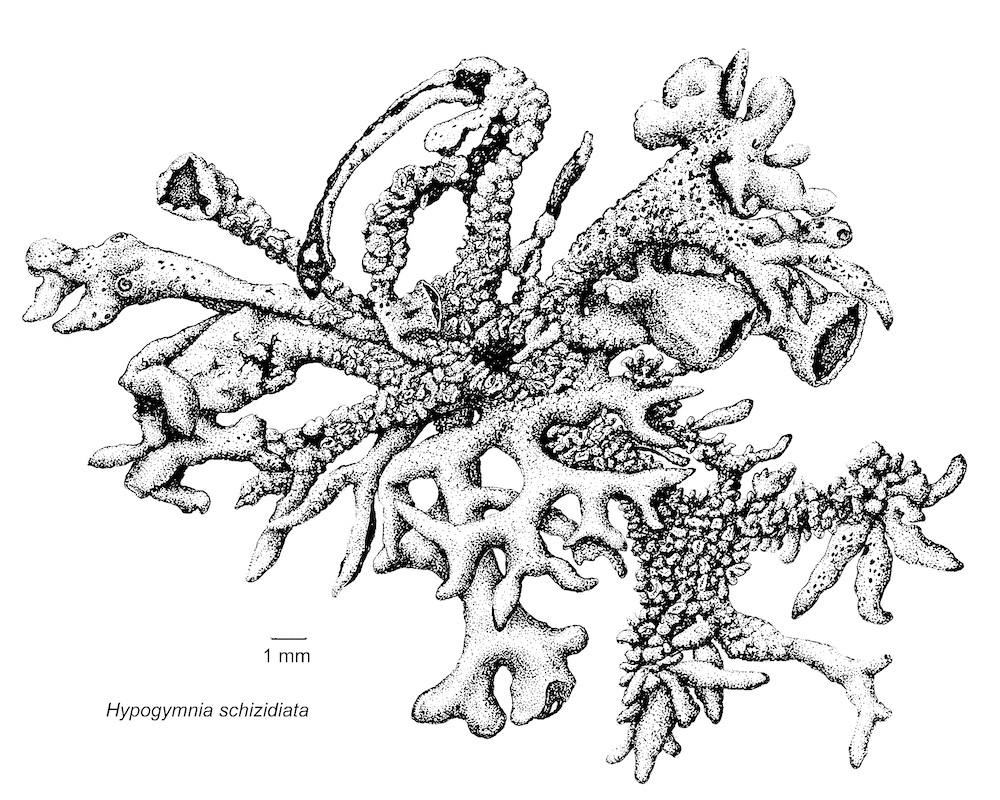
Habit
|

